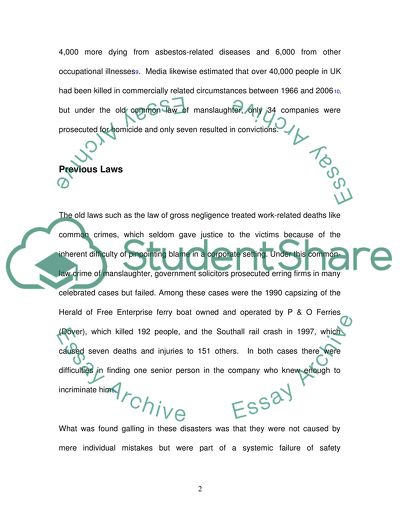Cite this document
(“Critically assess the provisions of the Corporate Manslaughter and Essay”, n.d.)
Critically assess the provisions of the Corporate Manslaughter and Essay. Retrieved from https://studentshare.org/miscellaneous/1544215-critically-assess-the-provisions-of-the-corporate-manslaughter-and-corporate-homicide-act-2007
Critically assess the provisions of the Corporate Manslaughter and Essay. Retrieved from https://studentshare.org/miscellaneous/1544215-critically-assess-the-provisions-of-the-corporate-manslaughter-and-corporate-homicide-act-2007
(Critically Assess the Provisions of the Corporate Manslaughter and Essay)
Critically Assess the Provisions of the Corporate Manslaughter and Essay. https://studentshare.org/miscellaneous/1544215-critically-assess-the-provisions-of-the-corporate-manslaughter-and-corporate-homicide-act-2007.
Critically Assess the Provisions of the Corporate Manslaughter and Essay. https://studentshare.org/miscellaneous/1544215-critically-assess-the-provisions-of-the-corporate-manslaughter-and-corporate-homicide-act-2007.
“Critically Assess the Provisions of the Corporate Manslaughter and Essay”, n.d. https://studentshare.org/miscellaneous/1544215-critically-assess-the-provisions-of-the-corporate-manslaughter-and-corporate-homicide-act-2007.


